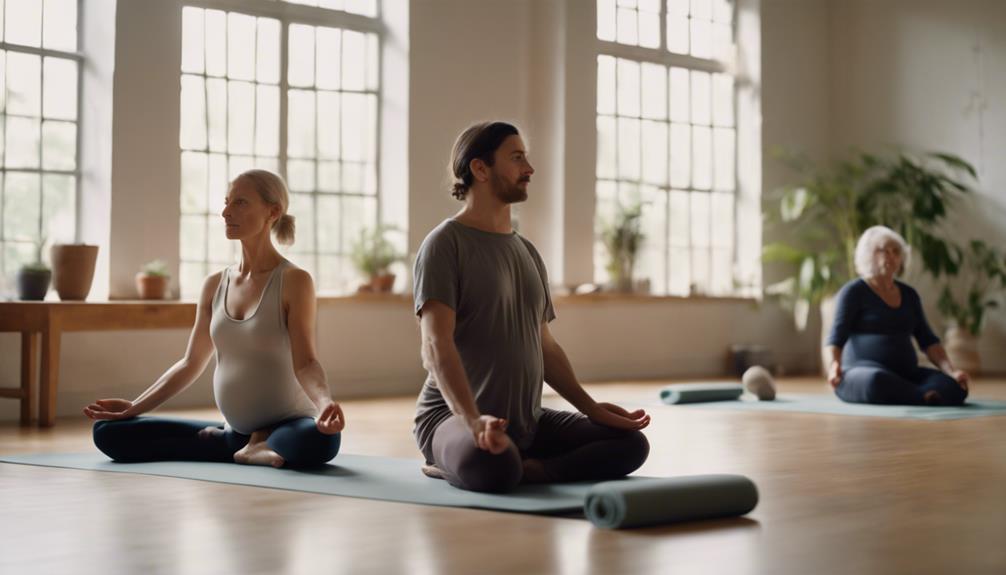What Is A Yoga Strap Used For

Yoga is a practice that emphasizes flexibility, strength, and mindfulness, and various tools can enhance your experience. Among these tools, the yoga strap stands out as an essential accessory. Whether you’re a beginner or an experienced yogi, understanding what a yoga strap is used for can significantly improve your practice. In this comprehensive guide, we will explore the multiple uses of yoga straps, their benefits, and tips for incorporating them into your routine.
The Basics of a Yoga Strap: Understanding Its Purpose
A yoga strap, often made of cotton, nylon, or other durable materials, is a long, sturdy band typically measuring around 6 to 10 feet in length. It usually features a buckle or loop at one end. The primary purpose of a yoga strap is to assist practitioners in achieving proper alignment and deepening stretches during yoga poses. By providing extra reach and support, a yoga strap helps enhance flexibility and stability, making it easier to perform poses that may otherwise be challenging.
Enhancing Flexibility: How a Yoga Strap Can Help
One of the key uses of a yoga strap is to improve flexibility. Many yoga poses require a significant range of motion, which can be difficult for beginners or those with limited flexibility. A yoga strap acts as an extension of your arms, allowing you to grasp your foot or leg without straining. For instance, in poses like Seated Forward Bend (Paschimottanasana), a yoga strap can help you maintain a straight back while reaching for your feet, thus deepening the stretch in your hamstrings and lower back.
Improving Alignment: The Role of a Yoga Strap
Proper alignment is crucial in yoga practice to prevent injuries and promote effectiveness. A yoga strap serves as a helpful tool for achieving correct alignment. For example, in poses like Triangle Pose (Trikonasana), a strap can help you maintain the integrity of your spine and hips by providing support when your arms cannot reach the ground. By using a yoga strap, you can focus on the pose’s mechanics and ensure that you’re not compensating with incorrect alignment.
Related Posts:
Supporting Balance: Strengthening Your Practice with a Yoga Strap
Balance poses can be challenging, especially for those who may struggle with stability. A yoga strap can provide the necessary support to help you find your center and maintain your balance. For instance, in poses like Tree Pose (Vrksasana), you can loop a strap around your standing leg to help stabilize your position as you lift the opposite foot. This added support allows you to focus on your breath and mindfulness, ultimately enhancing your overall practice.
Facilitating Deep Stretches: Unlocking Your Body’s Potential
Deep stretches are an integral part of a yoga practice, and a yoga strap can facilitate these stretches safely and effectively. By using a strap, you can gently pull your body deeper into a stretch without forcing it. For example, in Reclining Hand-to-Big-Toe Pose (Supta Padangusthasana), you can place the strap around your foot and extend your leg upwards, allowing you to stretch your hamstrings while keeping your back flat on the ground. This method not only enhances flexibility but also helps prevent injuries that can arise from overstretching.
Yoga Straps for Rehabilitation: Aiding Recovery and Prevention
Yoga straps are not only beneficial for enhancing practice; they also play a vital role in rehabilitation. Individuals recovering from injuries can utilize yoga straps to perform gentle stretches and movements safely. The controlled resistance offered by a strap allows for gradual progression without putting undue stress on the body. For example, if you’re recovering from a shoulder injury, you can use a strap to assist in shoulder stretches, promoting mobility and strength without risking further injury.
Incorporating Yoga Straps into Your Routine: Practical Tips
Integrating a yoga strap into your practice is simple and can be tailored to your specific needs. Start by using the strap in poses where you feel limited, and gradually increase its use as you become more comfortable. It’s essential to maintain a mindful approach; listen to your body and avoid pushing beyond your limits. Additionally, consider incorporating the strap into your warm-up sessions to enhance flexibility before moving into more challenging poses. The versatility of a yoga strap allows you to customize your practice, making it an invaluable addition to any routine.
Choosing the Right Yoga Strap: Factors to Consider
When selecting a yoga strap, several factors come into play. First, consider the material—cotton straps are soft and gentle on the skin, while nylon straps are more durable and may offer a better grip. The length of the strap is also important; a standard 8-foot strap works for most users, but taller individuals might prefer longer options. Finally, look for adjustable buckles or loops that provide versatility in your practice. Finding the right strap can make a significant difference in your yoga journey, enhancing both comfort and effectiveness.
In conclusion, a yoga strap is an incredibly versatile tool that can enhance your yoga practice in numerous ways. From improving flexibility and alignment to supporting balance and facilitating deep stretches, the uses of a yoga strap are vast and varied. Whether you’re a beginner or a seasoned practitioner, incorporating a yoga strap into your routine can help you unlock your body’s potential and deepen your connection to your practice. So, the next time you roll out your yoga mat, consider reaching for a yoga strap to elevate your experience.Are Yoga Pants The Same As Leggings